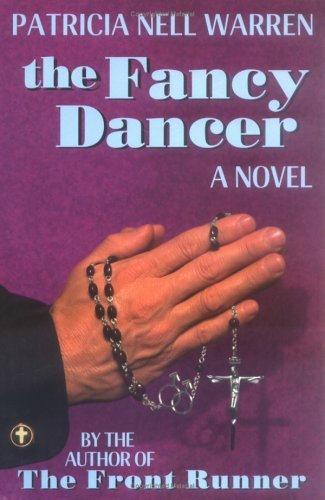
A young Catholic priest in a small Western town is compelled to recognize that his vocation is at risk as he finds himself attracted to one of his more problematical parishioners.
Warnings: Abelism, Misogyny, Usage of slurs, Depictions of homophobia, Depictions of racism
Category: M/M
The Fancy Dancer is a queer novel from the 70s about sexuality and religion and how faith and spirituality interacts with human desire and intimacy. While definitely in many ways a product of its time, it is a fascinating look at queer literature from the past, and one I found a lot of meaning in and heartfelt, often raw, emotional appeal. Be warned going into it that it does have some problematic attitudes on the racial and ableist fronts, but I found it very engaging despite these flaws.
WRITING
The story follows a priest named Tom as he meets and begins trying to council a gay parishioner. Their relationship gradually develops over the course of the book, as Tom wrestles with what he believes about homosexuality and sexual intimacy in general. It’s a coming out story of course, so a lot of their developing relationship is about his feelings about his own sexuality as well as his attraction to Vidal. As Tom comes around and comes out both to himself and to others the story meanders through how their relationship plays out, and the effects that Vidal’s presence has on his life. Vidal is a whirlwind of a person, and the catalyst for Tom’s journey. There is however an unfortunate area in the story in which Vidal’s ‘wife’ that he uses as a beard is a severely mentally ill woman who he has basically kidnapped to ‘take care of’ and that part of the book I found rather distressing. The lack of intersectionality can be a bit alarming, but it also feels very raw and realistic in its portrayal of the messiness of people’s lives, even if it’s not always positive.
EMOTIONAL ENGAGEMENT
This was an extremely emotionally compelling story, following one man’s journey of self discovery. Tom begins the narrative with no idea of his own sexuality, and his gradual coming out of the closet is the crux of the story. It’s a beautifully told story, and full of the emotional complexities he experiences as he wades into a new world, one that runs so counter to everything he’s been taught his entire life. Of course this means that he does encounter, and at times demonstrates himself, homophobic attitudes throughout the course of the story which may make some modern readers uncomfortable, especially as the book confronts head on religious dogma and rhetoric. This made the story all the more emotionally gripping for me personally, having also grown up around all of these very attitudes and ideas. It rang authentic to me, gut-wrenchingly so, and I found it a thoroughly enriching journey.
WORLDBUILDING
The worlds that this story primarily centres around are the queer scene of the 70s and the world of Catholic priesthood of the 70s, and how those two realms intersect. The book does a very good job of bringing both of these to life for the reader, and is quite frank in its showcasing of these two very opposing communities, but also gives the reader a glimpse at an already at the time forming subset of Catholicism that embraced queer culture and expression. Aside from the explorations of gay longing and desire in a closeted religious figure it should also be noted that Vidal is Indigenous, and the book’s treatment of that often does portray pretty upfront the kind of societal bigotry that was and is common. This includes both depictions of in-world racism experienced by Vidal as well as some unfortunate in-text language.
STEAMINESS
Despite being a book that generated more than it’s fair share of controversy and pearl clutching, this is not actually all that explicit of a book. There are some sex scenes, and they are handled with a tasteful amount of description and emotionality. They aren’t exactly pornographic by any stretch, but what made them salacious was the fact that not only are they gay sex scenes, but they involve a priest. The book explores a lot about how Tom feels about his budding awareness of his sexual attractions to men- not only that, but the question of celibacy, since he has of course taken vows of celibacy. Tom’s wrestling with these subjects is a huge part of the sex in this book, and I found it absolutely fascinating and compelling to read. I adored the way that the book presents the reader with Tom’s emotional struggle and brings us through how he reconciles two seemingly opposing aspects of himself.
Overall this is a beautiful and heartrending piece of 70s queer fiction, and one I would encourage everyone to read, despite its flaws. If for no other reason than that this book was banned in various places at various times, this is worth diving into. It brought me through so many emotions and felt so very meaningful to me from the perspective of a queer person brought up religious.
Have you read The Fancy Dancer? Let me know what YOU thought by leaving me a comment!